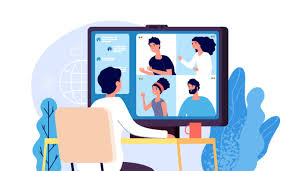
Aazad Abbas
University of Toronto
Burnout among healthcare professionals has been extensively documented.1 In their piece titled “Physician Burnout, Interrupted”, Hartzband and Groopman shed light on how sweeping changes in healthcare systems have led to unprecedented rates of burnout among physicians in recent decades.2 Fundamentally, their perspective is widespread implementation of electronic health record (EHR) systems and performance metrics have eroded the intrinsic motivation of modern physicians.3
Hartzband and Groopman present compelling arguments dissecting how the core pillars supporting professionals’ intrinsic motivation and psychological well-being – autonomy, competence, and relatedness – have eroded over the last half century.4 Autonomy has disappeared through constant surveillance. Competence was replaced by checking off boxes. Relatedness is threatened by a system increasingly driven by money and metrics. These changes represent a shift to extrinsic factors becoming the dominant motivating force among modern physicians. They argue this is the very reason why burnout is almost a universal experience among medical professionals, from budding medical students to veteran physicians.
From the shift to evidence-based medicine in the 1900s, to the invention of one of the most successful surgical procedure in the modern times – the hip arthroplasty – medicine has been at the forefront of innovation.5 Medical practitioners are constantly integrating scientific discoveries with technological innovations to bring forward the next revolution in healthcare. Except this time an unforeseen natural threat has forced us to adapt medical practice: COVID-19. Medical schools shifting their curricula online; clerks having countless rotations cancelled; residents being moved to unplanned services; physicians scrambling to take care of their patients. These are just a handful of ways in which medical professionals have adapted to the pandemic, willingly or otherwise.
With these changes, it is important to ask how these changes affect the experiences of medical students. Medical school is a time of immense change, as you cram to study as many topics as possible, learn a plethora of skills rotating through all specialties, and home in on your professional skills. This training camp of medical school is made bearable through the sense of bonding with peers, as you all traverse this together. At least that was true until very recently. The motivation of students across the globe has plummeted, with a generalized sense of uncertainty for the future.6
No more shadowing, no more scrubbing in for the first time, no more going to lecture with your colleagues. Medical institutions have gone above and beyond in ensuring the medical school experience is maintained as much as possible. However, the recent pandemic has stolen valuable opportunities for medical students, eroding their intrinsic motivation. 6 Passing courses and meeting assignment deadlines have become the primary factors pushing students. Asides from the hopes of returning to normal once a vaccine is delivered, students have lost their drive for learning. This loss of drive, combined with an overarching sense of anxiety about the future, chips away at the feelings of belonging. It seems like there is no light at the end of this tunnel.
How does one repair the damage done? Is it the responsibility of medical schools to motivate students? Is it the responsibility of the friends and family to urge students not to give up? Or is the responsibility of the medical community as a whole to recognize and repair every crack in the system? Fixing the damage starts with looking at one’s self. Being a medical student is a privilege, something most medical students have worked hard to achieve. Due to the demands of medical school, this is something easily forgotten. Students should remind themselves why they went to medical school in the first place. Why they have chosen to walk this long and arduous path. Each student has their own motivations for pursuing medicine, from the death of close relatives to the drive to reduce systematic racism in medical institutions. These reasons speak to the deeply personal intrinsic motivations of medical professionals. At the end of the day, medical professionals seek to better the lives of others. Remembering this core tenant of medicine is the only way we may seek to keep our passion thriving, for everything around us seems to be on fire.
It is time for medical students to adapt to the current climate of uncertainty. To address the issue of burnout, and to continue innovating into the future, medical students need to adapt to this reality. This pandemic is an opportunity to bring about the change desperately needed in medicine. The way medicine will be practiced, the shape of the Canadian healthcare system, and the very status of physicians in society will be shaped by this generation of medical students.
aazad.abbas@mail.utoronto.ca
References
1. West CP, Dyrbye LN, Erwin PJ, et al. Interventions to prevent and reduce physician burnout: a systematic review and meta-analysis. Lancet 2016. DOI: 10.1016/S0140-6736(16)31279-X.
2. Hartzband P and Groopman J. Physician Burnout, Interrupted. N Engl J Med 2020. DOI: 10.1056/nejmp2003149.
3. Friedberg MW, Chen PG, Van Busum K,R., et al. Factors Affecting Physician Professional Satisfaction and Their Implications for Patient Care, Health Systems, and Health Policy. Rand Health Q 2014.
4. Gagné M and Deci EL. Self-determination theory and work motivation. J Organiz Behav 2005. DOI: 10.1002/job.322.
5. Knight SR, Aujla R and Biswas SP. Total Hip Arthroplasty – over 100 years of operative history. Orthop Rev 2011. DOI: 10.4081/or.2011.e16.
6. Bentata Y. The COVID-19 pandemic and international federation of medical students’ association exchanges: thousands of students deprived of their clinical and research exchanges. Medical Education Online 2020. DOI: 10.1080/10872981.2020.1783784.

